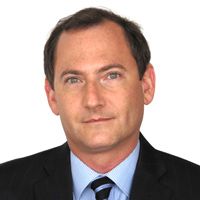Dollar-Cost Averaging Into Stocks: How Does DCA Investing Work?
A brief primer on dollar-cost averaging into stocks, the popular set-it-and-forget-it investing method.


Dollar-cost averaging (DCA) is one of the most important concepts an individual investor can master.
Fortunately, it's also one of the easiest.
The idea of dollar-cost averaging is to invest your dollars in a stock, exchange-traded fund (ETF) or other security in regular, equal portions over time.
From just $107.88 $24.99 for Kiplinger Personal Finance
Become a smarter, better informed investor. Subscribe from just $107.88 $24.99, plus get up to 4 Special Issues

Sign up for Kiplinger’s Free Newsletters
Profit and prosper with the best of expert advice on investing, taxes, retirement, personal finance and more - straight to your e-mail.
Profit and prosper with the best of expert advice - straight to your e-mail.
Sure, you could invest your cash in a single lump sum, but how do you know you're getting the best price? (Remember: The idea is to buy low.)
In the short term, many stock movements can be random, and even the pros are more likely to fail than succeed when trying to precisely time the market.
Dollar-cost averaging doesn't guarantee you the lowest cost basis on your investments. It can, however, produce a lower average cost basis over a longer period of time than lump-sum investing.
And, again, it's easy to do.

How dollar-cost averaging works
If you have a 401(k) or similar plan where you automatically invest a percentage of every paycheck in a retirement plan, guess what? You are already dollar-cost averaging.
That's because every pay period, you're investing the same amount of cash like clockwork.
But say you want to do this in an IRA or brokerage account. Here's an example of how this would work with an individual stock.
You have $10,000 to invest in, say, grocery chain Kroger (KR). You effectively have two options:
1.) Make a lump-sum investment of $10,000. If shares in the supermarket chain decline soon after you make your investment, however, you might kick yourself over your poor timing.
2.) Dollar-cost average, investing the $10,000 gradually and at regular intervals. For instance, you might purchase $833.33 worth of KR stock every month for 12 months.
The beauty of dollar-cost averaging is that if Kroger stock does indeed decline over that period of time, you'll buy KR shares at a lower cost. Thus, you'll get more shares for your $833.33, too.
Here's how dollar-cost averaging with KR would've looked across 2019, assuming you had bought at the closing price of each month:

In short, DCA lets an investor automatically buy more shares in a company when they're cheaper, and fewer shares when they're more expensive.
Nothing's a guarantee, of course
As with everything in investing, DCA is not without its detractors. Dollar-cost averaging can underperform lump-sum investing at times.
But while systematic investing does not guarantee a profit or protect against loss, it can lift a psychological brick or two off your shoulders.
With DCA, you don't need to agonize over whether you should buy right now, or wait for earnings, or wait for a market dip. You just implement the system and keep yourself updated on the stock over time.
Investors also need to consider whether they have the stomach to keep buying when share prices are falling or the stock market is selling off.
Dollar-cost averaging doesn't mean to throw good money after bad if the company's narrative has changed considerably. But it does mean being consistent through short-term ups and downs.
That said, DCA can be a good strategy for long-term investors who just want to set it and forget it.
Related Content
Profit and prosper with the best of Kiplinger's advice on investing, taxes, retirement, personal finance and much more. Delivered daily. Enter your email in the box and click Sign Me Up.

Dan Burrows is Kiplinger's senior investing writer, having joined the publication full time in 2016.
A long-time financial journalist, Dan is a veteran of MarketWatch, CBS MoneyWatch, SmartMoney, InvestorPlace, DailyFinance and other tier 1 national publications. He has written for The Wall Street Journal, Bloomberg and Consumer Reports and his stories have appeared in the New York Daily News, the San Jose Mercury News and Investor's Business Daily, among many other outlets. As a senior writer at AOL's DailyFinance, Dan reported market news from the floor of the New York Stock Exchange.
Once upon a time – before his days as a financial reporter and assistant financial editor at legendary fashion trade paper Women's Wear Daily – Dan worked for Spy magazine, scribbled away at Time Inc. and contributed to Maxim magazine back when lad mags were a thing. He's also written for Esquire magazine's Dubious Achievements Awards.
In his current role at Kiplinger, Dan writes about markets and macroeconomics.
Dan holds a bachelor's degree from Oberlin College and a master's degree from Columbia University.
Disclosure: Dan does not trade individual stocks or securities. He is eternally long the U.S equity market, primarily through tax-advantaged accounts.
-
 The Rule of Compounding: Why Time Is an Investor's Best Friend
The Rule of Compounding: Why Time Is an Investor's Best FriendDescribed as both a "miracle" and a "wonder," compound interest is simply a function of time.
-
 4 Great Tools to DIY Your Own Financial Plan
4 Great Tools to DIY Your Own Financial PlanSmart Savings Several tools picked out by Kiplinger that DIYers can use to make their own financial plan.
-
 The 7-Month Deadline That Sets Your Lifetime Medicare Premiums
The 7-Month Deadline That Sets Your Lifetime Medicare PremiumsUnderstanding Medicare enrollment is crucial, as missing deadlines can lead to permanent late enrollment penalties and gaps in coverage.
-
 The Rule of Compounding: Why Time Is an Investor's Best Friend
The Rule of Compounding: Why Time Is an Investor's Best FriendDescribed as both a "miracle" and a "wonder," compound interest is simply a function of time.
-
 If You're a U.S. Retiree Living in Portugal, Your Tax Plan Needs a Post-NHR Strategy ASAP
If You're a U.S. Retiree Living in Portugal, Your Tax Plan Needs a Post-NHR Strategy ASAPWhen your 10-year Non-Habitual Resident tax break ends, you could see your tax rate soar. Take steps to plan for this change well before the NHR window closes.
-
 Stocks Chop as the Unemployment Rate Jumps: Stock Market Today
Stocks Chop as the Unemployment Rate Jumps: Stock Market TodayNovember job growth was stronger than expected, but sharp losses in October and a rising unemployment rate are worrying market participants.
-
 The Delayed November Jobs Report Is Out. Here's What It Means for the Fed and Rate Cuts
The Delayed November Jobs Report Is Out. Here's What It Means for the Fed and Rate CutsThe November jobs report came in higher than expected, although it still shows plenty of signs of weakness in the labor market.
-
 Your Year-End Tax and Estate Planning Review Just Got Urgent
Your Year-End Tax and Estate Planning Review Just Got UrgentChanging tax rules and falling interest rates mean financial planning is more important than ever as 2025 ends. There's still time to make these five key moves.
-
 What Makes This Business So Successful? We Find Out From the Founder's Kids
What Makes This Business So Successful? We Find Out From the Founder's KidsThe children of Morgan Clayton share how their father's wisdom, life experience and caring nature have turned their family business into a respected powerhouse.
-
 Stocks Struggle Ahead of November Jobs Report: Stock Market Today
Stocks Struggle Ahead of November Jobs Report: Stock Market TodayOracle and Broadcom continued to fall, while market participants looked ahead to Tuesday's jobs report.
-
 Past Performance Is Not Indicative of Your Financial Adviser's Expertise
Past Performance Is Not Indicative of Your Financial Adviser's ExpertiseMany people find a financial adviser by searching online or asking for referrals from friends or family. This can actually end up costing you big-time.